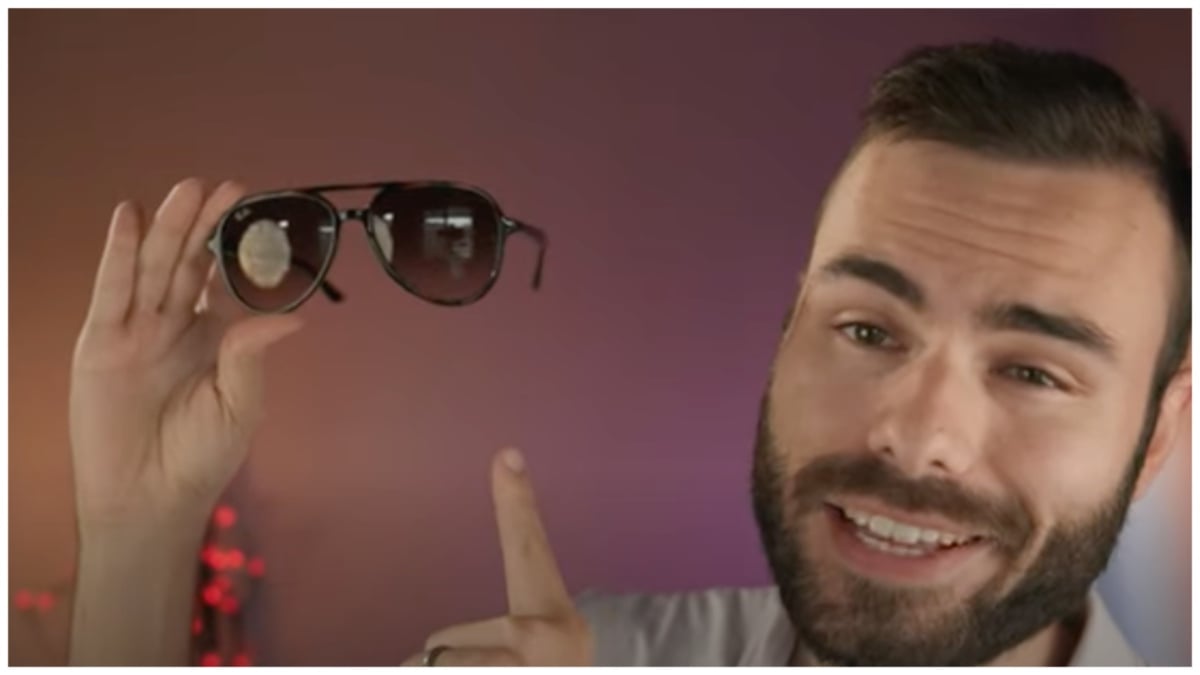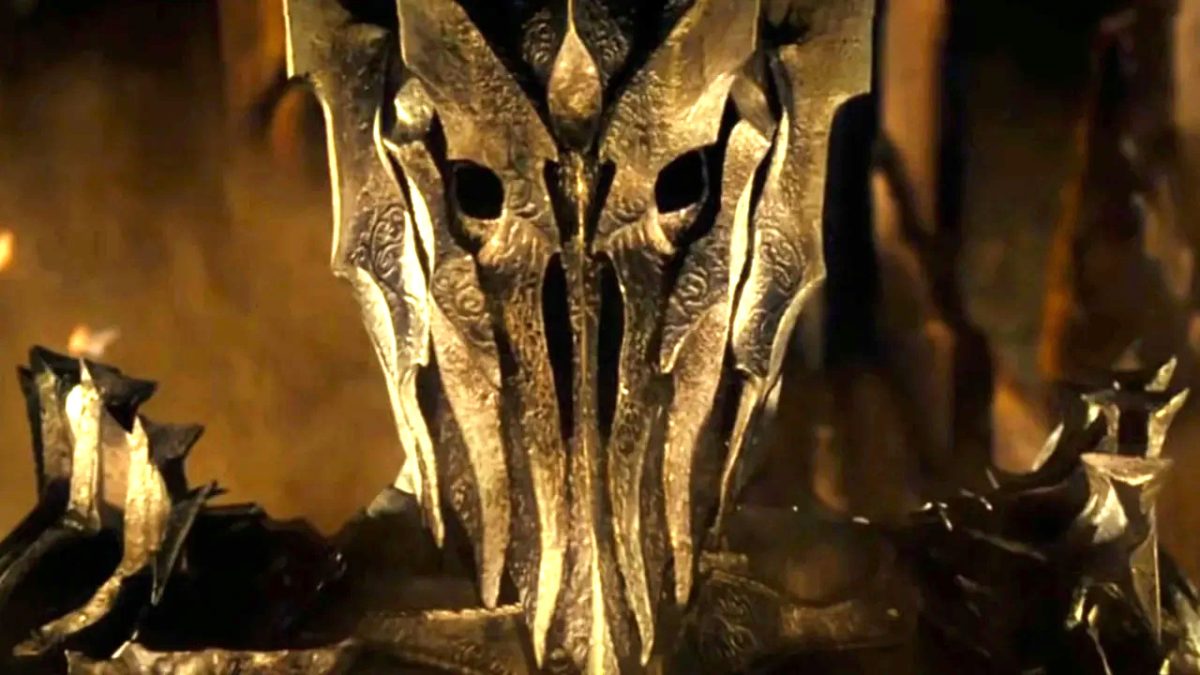50) Godzilla (1954)

Calling the majority of Toho’s Godzilla movies ‘science-fiction’ would be a pretty major stretch – kaiju movies make no claim to any sort of genuine scientific basis, and God bless them for it – but one of the many amazing things about Ishiro Honda’s groundbreaking 1954 classic is that it is science-fiction, through and through – and tremendous science-fiction at that.
One of this genre’s primary functions is to process and analyze the horrors of the present through scientifically heightened circumstances, and Godzilla does just that. A direct response to the nuclear bombings of Hiroshima and Nagasaki only 9 years earlier, the film is a remarkably nuanced, thoughtful, and harrowing allegory not only for the terror of living under a nuclear shadow, but for the guilt produced in people who helped to give that shadow life.
Later Godzilla movies, with their focus shifted to the monsters and their battles, would put the humans in distinctly secondary positions, but while the eponymous monster is as grand and horrifying as he has ever been in this film – the cinematography employed to make him look truly fearsome remains as jaw-dropping today as it was in 1954 – it is the human characters who matter here, and the performances that leave an undeniable impact.
Godzilla is both great science-fiction and great filmmaking, and constantly underrated as a pristine example of both.
49) Equilibrium

The very embodiment of a cult classic, Kurt Wimmer’s Equilibrium was maligned by critics, made but a tremor at the box office and then went on to amass legions of devoted followers when it finally reached home video.
Three years before he personified what would be one of (if not the) definitive portrayals of Batman, Christian Bale took badass to a whole new level with his former government agent turned resistance fighter John Preston. Wimmer’s personally created “Gun Kata” gave Equilibrium’s fight sequences an incredibly unique feel even while they often unfurled in a questionable manner (from a realism standpoint that is).
But you know what, they’re better because of the sheer pulse pounding audacity they embrace. While certainly inspired by a number of past sci-fi hits, this dystopian adventure is as entertaining as they come and has more than enough of its own vision to standalone as a memorable futuristic adventure.
48) Forbidden Planet

Before he became renowned for his iconic parodic stints in The Naked Gun films, his famous turn in Airplane! (don’t call him Shirley) and countless other comedies, the late Canuck Leslie Neilson was known more as a dramatic thespian, or at the very least not the goofball he would later personify.
His big screen breakthrough arguably came in 1956 with Forbidden Planet. It was at the height of the sci-fi boom, which saw other masterpieces including The Day the Earth Stood Still, When World’s Collide, It Came From Outer Space, The Lost Planet and The War of the Worlds released (and in the same year as the quintessential Invasion of the Body Snatchers no less).
The most significant compliment one could pay to this enthralling epic is that is holds up immensely well today, even though it was shot entirely indoors on a soundstage with little to no physical landscapes employed to craft the alien world of Altair IV. It comes as no surprise that many of its sweeping sets were hand designed by the iconic Cedric Gibbons, who won an astonishing 11 Academy Awards over his career as set designer and art director.
More so than its ingenious visuals, Forbidden Planet persists thanks to its heady ideas, the archetypal sentient being of Robby the Robot and strong performances which too hold up after more than 55 years. It was a box office hit at the time and it’s not hard to see why, this gripping, awe inspiring and sometimes frightening monument of science fiction is as memorable as they come.
47) The Man Who Fell To Earth

The ultimate tale of a homesick alien came long, long before ET. The Man Who Fell To Earth features David Bowie as Thomas Jerome Newton, an alien who blends in on Earth by starting a technology conglomerate and ultimately becoming one of the wealthiest men in the world. Subtle right? He needs that wealth in order to send water back to his home planet, which is going through a drought severe enough to kill all of his species, including his wife and children.
It’s slow, it’s thoughtful, but it’s never boring in the slightest. It really is the definition of contemplative, a word which is used far too often to describe lesser films of this genre. The whole thing is hauntingly beautiful in a way that modern sci-fi rarely can compete with.
46) TRON

In the early 80s, the power of artificial intelligence was beginning to seem relevant for more than just scientists and science fiction writers, and there’s no movie that shows the possibility of just where that technology could go, at least on a program by program basis, better than Steven Lisberger’s TRON.
Flynn (Jeff Bridges) is a computer hacker who gets on the wrong side of a fearsome Master Program. The MP turns him from a human into a program, revealing a world where weaker programs are forced to fight to the death for entertainment and those who believe in users are branded religious fanatics and expired.
While the effects may be a bit dated, it’s still a visually-stunning masterpiece. It’s the sort of movie that makes you feel as if you’re actually in a computer, even though that’s probably nothing like the inside of a computer looks, even to a program. Science fiction is a genre ripe for visual effects, perhaps more than any other, and TRON is a spectacle in a way that few films from the time are.
Watching TRON now, 30 years after its release, it’s the ultimate nostalgia-inducer of a time before console gaming, back when arcades were the place to be and high scores were coveted. TRON is the highest stakes video game of all time, and because of that, it’s a pretty highly entertaining movie as well. Throw in an awesome performance by Jeff Bridges and the stunning visuals, and you’ve definitely got one of the best science fiction movies of all time.
45) THX 1138

One of the earliest films to be set so far into the future, THX 1138 was George Lucas before any of the Skywalkers, before he had worked with Harrison Ford and made a name for himself, and before his films were expected to be anything other than pure, hard sci-fi.
Robert Duvall plays the titular THX, a factory worker whose bland existence involves sedative drugs to allow him to complete his work, sit in front of holograms at night, and for the most part ignore his mate. Of course, just as is true with many men, the first time he feels sexual attraction everything changes. He no longer wants to spend his life drugged, but those who monitor every minute of everyone’s life think that’s a major taboo.
It’s a refreshing take on a fugitive flick in that almost all of his pursuit is controlled. There aren’t any corny chases, there isn’t a huge blaze of gunfire to contend with, rather they simply track him, and he evades them, with one pretty awesome car chase and a heck of a ladder. It breaks from the mindlessness of such stories, instead providing space to think, to enjoy the performances and the beauty of the futuristic world.
It’s a pretty remarkable world that Lucas creates, especially for 1971. Every inch of every frame is so perfectly crafted into a believable future that it’s easy to forget this wasn’t actually shot in the 25th century. The monotony and whitewashed scenery makes for a bleak world, but there’s still awesome life to it as well, especially in the car chase scene.
44) Total Recall

Long before World of Warcraft and Second Life, author Philip K Dick imagined a story called We Can Remember It for You Wholesale about a simple clerk who has big dreams of going to Mars but can’t afford to get there, so he goes to a company called REKAL who implant a memory of a Martian sojourn as a secret agent in his head.
Like Ridley Scott’s Blade Runner, a Dick short story supplied the inspiration for Hollywood filmmakers to launch an ambitious sci-fi epic, in this case, We Can Remember It for You Wholesale became Total Recall, Paul Verhoeven’s directorial follow-up to RoboCop. Verhoeven wasn’t the first to take on the project, but he was the person who got what the producers wanted to do with the story, a Raiders of the Lost Ark style romp on Mars.
Arnold Schwarzenegger, then at the height of his stardom, plays everyman Doug Quaid. And although Ar-nuld can hardly be described as an “everyman,” his ample charm and humor are on display as Quaid makes his way to Rekall for his secret agent Martian vacation, only to trip over the possibility that he lived another life before he was Quaid.
Before you can say “Get your ass to Mars,” Quaid’s being pursued by bad guys and forced to confront the idea that there’s a version of himself that’s not all good. Although the film does explore some big ideas about the nature of identity and reality, Verhoeven balances that out with cliffhanger action and some of the most bombastic and bloody violence to ever be filmed for a summer blockbuster, so much so that Total Recall was slapped with an initial X-rating from the MPAA.
Unlike his previous hit RoboCop and then-future film project Starship Troopers, Verhoeven’s vision was more straightforward than satirical, but he still balanced a lot of demands put on this movie by the studio, the producers and audiences. The hyper-realistic violence played well to the popcorn crowd, but it also fed the subtext about whether or not the events Quaid was experiencing was a dream.
As for Quaid himself, Schwarzenegger was well served with lots of big stunts and his signature one liners. Indeed casting is Verhoeven’s gift with these sci-fi opuses, as he recruited RoboCop villain Ronny Cox to be the big bad Martian Governor Cohaagen, and Starship Troopers’ Michael Ironside plays Cohaagen’s bag man, Richter. Meanwhile, Sharon Stone, who would become a star with Verhoeven’s next film Basic Instinct, wears crazy well as Quaid’s wife Lori. Considering all that, it’s no wonder that Sony wanted to catch lightning in a bottle with 2012’s Total Recall remake, but it’s also not surprising that they were completely unsuccessful in the attempt.
43) Star Trek (2009)

After lying dormant for years, the Star Trek franchise bounced back in spectacular fashion with J.J. Abrams’ adroit, energetic reimagining of the sci-fi staple. Ingeniously setting his Trek in a parallel universe so as to avoid continuity constraints, Abrams gave audiences a fresh take on the beloved crew of the starship Enterprise without ever appearing sacrilegious, no mean feat in of itself.
Rarely has a remake worked so completely, and the cast was in large part responsible for that. Chris Pine made for a winning Kirk, and his chemistry with Spock (an equally outstanding Zachary Quinto) powered the film, but the cast as a whole was nothing short of fantastic, with Simon Pegg, Karl Urban, and Zoe Saldana all developing memorable versions of fan favorite characters.
Star Trek was gorgeous to behold, sleekly updating the Enterprise with visual flair while presenting some jaw-dropping shots of the film’s space setting. This reboot also worked both as an origin story and as a great Star Trek adventure by itself, with a great villain in Eric Bana’s Romulan warlord Nero and some terrific action sequences, including a death-defying space jump over Vulcan and the downright operatic final space battle.
Effortlessly saluting the Star Trek of old while presenting a fresh new frontier, Abrams’ Star Trek revitalized the franchise with great action, warmth, heart and innovation.
42) Attack The Block

It’s a crying shame that more people don’t know about this whip-smart British sci-fi/horror mash-up, because it’s one of the most distinctive and memorable alien invasion thrillers to hit screens in ages. Set in a grimy South London council estate, Attack the Block handily splices high-octane chase sequences, sidesplitting comedy, genuine scares, and sharp political commentary, with a slick style all its own.
John Boyega makes one hell of a first impression as Moses, the hardened leader of a scruffy street gang who finds himself responsible for protecting his friends after aliens rain down on the block and start ripping faces off. The aliens themselves are a low-budget wonder to behold, black as night with multiple rows of glow-in-the-dark fangs. They’re much more effective and terrifying than anything Hollywood has conjured up lately.
The entire film radiates with energy, particularly from its young talented cast, especially Jodie Whittaker as nursing student Sam and Alex Esmail as the gregarious Pest. Attack the Block signifies the arrival of two major talents, Boyega and the film’s director, Joe Cornish, who stages his scenes with exceptional confidence and skill for someone making his feature film debut. Cornish knows that you don’t need a big scale or budget to make a great movie, and that’s what he’s done with Attack the Block – he’s made a quick, inventive, witty, scary, supremely satisfying genre piece on a shoe-string budget, and what’s more, he’s made it look easy.
41) Strange Days

When a movie made in 1995 and set in the last days of 1999 still reads as relevant, portentous and apocalyptic, there is something fundamentally right with it. Kathryn Bigelow’s Strange Days is that movie.
Ralph Fiennes is Lenny Nero, a disgraced cop turned dealer pining for his lost love in a might-have-been Los Angeles that waits for the then-coming millenium on the edge of a razor. Lenny does not deal drugs. He deals memories. He ekes out a day to day living by buying and selling memories recorded with government-turned-black-market devices called SQUIDS. The SQUID allows the wearer to experience whatever the recorder experienced in first person, with all the associated sensations.
Lenny will sell everything from sex to bank robberies to something as simple as a run on the beach, as long as it does not turn into a snuff film. When his lost love’s former best friend turns up brutally murdered, Lenny finds himself pulled into a multifaceted conspiracy built on a memory that could tear Los Angeles apart. His only real ally is Angela Bassett’s Mace, a limousine driver and bodyguard who puts up with him for the sake of their friendship and a very personal debt. And all the while, the clock ticks down to 2000, with the continued existence of the world an open question.
Strange Days is not without its flaws (the pacing gets a bit wonky in places), but when it works it works really well. Lenny is a remarkable character, simultaneously sleazy, pathetic, sympathetic and noble, and believably so thanks to Fiennes’ harried but somehow cool performance. The world Bigelow builds around him is one grounded in the history of Los Angeles in the 1990s; a mixture police brutality, racial tension and general anxiety always on the verge of boiling over, but ratcheted up by the presence of incredible technology and genuine doubt about whether or not the world will keep turning.
Strange Days asks the questions that the best science fiction asks. How do we interact with our technology? How will it change us? How will it change our world? How will we change our world? And it asks them through the lens of Lenny’s well-written redemption arc and Bigelow’s knack for gorgeous imagery. The first person memory sequences and the gigantic party where the last act takes place are memorable, to say the least.










Published: Sep 23, 2014 04:19 pm